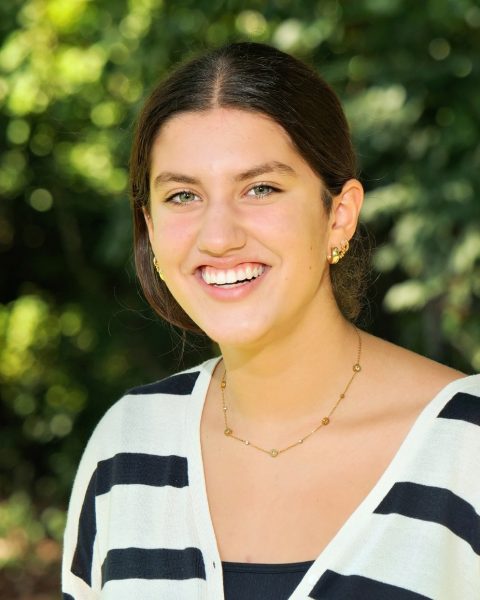Who can I turn to when I need to discuss a religious question?” “Who serves as my spiritual role model?” “Whose wisdom can I consider reliable religious authority?”
Each of these questions point to a simple answer: rabbis.
“Rabbis are important as spiritual guides and teachers, nurturing the spirituality and learning of their communities,” Rabbi Fabian Werbin from the Kol Shalom synagogue in Rockville said. “The rabbi wears many hats: leadership to guide, teaching to educate and a pastoral heart to be a helper and an ear for the people.”
Organized religion has rapidly been losing popularity in the United States, and Judaism is no exception. In addition to los-
ing community membership, the leadership structure is also in a period of crisis. Across the U.S., Jewish communities are strug-
gling to fill rabbinic leadership roles and congregations are suffering as a result.
American Jewry is quickly learning that there is a need to adapt to this gap in leadership. But the real question is: how can American Jewish life continue to thrive when the main leadership structure has such large cracks in its foundation?
Causes of the shortage:
The rabbi shortage, as a whole, is a result of many differing factors. Many people view the lack of prioritizing Jewish leadership in home life and a rapidly decreasing interest in organized religion in the U.S. as contributing factors, among other reasons. Religious life in America as a whole is on the decline. According to a Pew Research Study on religion in the U.S., atheism has
had a 13% increase since 2007, with only 7% of people attending religious services once or twice a month. When fewer people engage in religion, there are fewer potential leaders for communities.
Rabbi Ayelet Cohen, the Jew-
ish Theological Seminary Dean of the Rabbinical School and Dean of the Division of Rabbinic Leadership said she thinks the role of organized religion in the U.S. is way less significant generally than it was two decades ago. As a result of this, Cohen sees that fewer people are drawn to the clergy and organized religion than they were previously.
Conservative Judaism has shrunk by 10% and approximately 18% of adult Jews who were raised Jewish now identify as non-religious, according to a Pew Research Study on Jewish denominations. Yeshivat Chovevei Torah (YCT) Executive Di-
rector Ruthie Strosberg-Simon believes that without a strong foundation in Judaism creat-
ed by rabbis and other Jewish teachers during childhood, people are less likely to maintain their religious identity and take
on leadership roles as adults.
“Rabbis are also responsible for the shortage,” Werbin said. “If we rabbis aren’t good role mod-
els, people won’t want to become rabbis. So we have a responsibility.”
Other people point to a lack of prestige for rabbis, compared to other careers as a contributing factor. According to Strosberg-Simon, many parents place more value on financial success over spiritual fulfillment. She said that when parents do not prioritize spiritual leadership in the home, fewer individuals are inclined to pursue the rabbinate.
“Parents have not transmitted to their kids that careers in Jewish communal service and in the rabbinate are of great value, of great meaning, and that they should consider going into that field,” Strosberg-Simon said. “There’s too much emphasis on
finance and tech and becoming a doctor. Success seems to be defined by those types of careers. And that’s what kids are hearing
from their parents.”
However, the average salary of an American Rabbi in 2021-2022 was $174,524.74 according to the Rabbinical Assembly, which is actually over double the average slaray of an American. Still, salaries can range especially during rabbinical school and at the beginning of a rabbi’s career, and the average new rabbi has a a large amount potential to carry student loans.
Becoming a rabbi:
To become a rabbi, one must go through a process to obtain smicha, Rabbinic ordination. This process typically takes seven years, with four years of undergraduate study in an area such as Jewish studies, education or another degree that relates to the student’s future rabbinic pursuits. In addition to this, three additional years of study are required at a minimum. A majority of rabbini-
cal students study in a Yeshiva to get smicha, while others study in small schools or on an individual basis with a rabbi.
“It’s not only about the classroom but about immersing in a community of practice … really leaning into those practices in a community of other people who are committed to doing that,” Cohen said.
After obtaining smicha, rabbis can choose to take on various communal leadership roles. Some of these roles include pulpit leadership as synagogue clergy, educational leadership in a classroom setting, college campus leadership and chaplaincy.
“There are so many opportunities,” Cohen said. “ … Often people think ‘Well, do I want to be up there giving sermons or whatever people think rabbis do?’ Obviously, some people want that. But when some people see what is possible within the profession, it lands in a very different way.”
Rabbis who choose to lead congregations sign themselves up for a multitude of responsibilities.However, though the specific role of the pulpit rabbi varies depending on the congregation, rabbis generally lead their congregations in terms of religion and community. This often includes organizing minyans, delivering sermons and giving guidance to members of the congregation about specific rituals and customs.
There are many factors that contribute to one’s decision to become a rabbi, and they vary with each individual. Beyond his love for learning, Rabbi David Wolkenfeld from the Ohev Sholom Congregation in Washington, D.C. said his de-
cision was in part made because he wanted to build connections with others and to represent his community. For him, becoming a rabbi was a way to “share a different message” about the Jewish community and challenge general misconceptions relating to the Jewish world.
Rabbi Deborah Megdal, Assistant Rabbi of Congregation Beth El of Bethesda, believes there is added value in being a leader of a congregation. Megdal knew she wanted to be a pulpit rabbi from a very young age.
“In thinking about what I want to do as a rabbi, I really love the idea of being connected to people throughout different stages of life,” Megdal said. “And you only get to do that if you are a rabbi in a community that’s set up. There are a lot of different ways to build relationships, but the one that I can see and I’m excited to be a part of is building relationships in a community like us in a synagogue context.”
Everyday life:
After rabbinical school, pulpit rabbis must be available to serve their communities at all times. Wolkenfeld said that rabbis offer insight and words of wisdom relating to the Torah, keep their communities running smoothly and help congregants tackle heavier religious questions.
“The joyful parts are when … my training and background enables me to meet someone’s need for guidance and support,” Wolkenfeld said. “That’s a very special feeling. Those moments make me feel really grateful to be a rabbi.”
But being a rabbi has its challenges as well. Unlike other jobs where people can go home at a set time every night, a rabbi’s work never ends.
Rabbis are frequently called upon by their communities to provide support during times of crisis, such as illness, loss or personal struggles. According to Megdal, the constant exposure to sufferingand vulnerability can lead to emotional exhaustion and burnout. This can be another deterrent for the people interested in becoming a rabbi.
“It requires you to have that emotional openness and readiness and preparation to be present for people,” Megdal said. “And that can be more taxing than other kinds of work because you can’t just phone it in, or use your muscle memory.”
Additionally, rabbis have a lot of pressure to keep less engaged congregants more involved in synagogue life.
“[Rabbis] always have to be on, they have to drag people over for Shabbat,” CESJDS High School Jewish Life Chair Robert Shorr said. “It’s not the same relaxed atmosphere. Their family life, their job and their personal life, are [all] so intertwined, Shabbat in some ways is the busiest day for them.”
Overall, Cohen thinks that because it is such a challenging role, the choice to be a rabbi can be difficult for many people. In her eyes, this is a significant reason for the shortage. However, she urges people to think about how the job could positively impact their life in the future.
“I think that becoming a rabbi means leading a life of service, which is a little bit counter cultural,” Cohen said. “…It’s certainly not an easy job, but it’s an incredibly fulfilling job.”
Effects of the shortage on American Jewry:
Across the country, American Jewish leaders have begun to understand the gravity of the rabbi shortage in America. As they con- sider the effects of this shortage. Like many others, Strosberg-Simon said she is concerned about the development of the Jewish community in years to come as a result of this lack of new leaders.
“Look at what will happen if we don’t have a pipeline of Jewish educators and leaders,” Strosberg-Simon said. “There won’t be quality Jewish education, there won’t be Jewish camps, communities will struggle to stay together for lack of leadership, etc. I feel that Jewish continuity is at stake here.”
High school Talmud teacher Rabbi Benjamin Barer also shared the same idea. In his mind, rabbis are meant to guide communities in a traditional sense and be a pillar of leadership. Without them, communities will have to become innovative to fill that role.
“I think Jewish communities really benefit from having rabbis because most people don’t have that kind of time to devote to studying tradition, to thinking about it and to charting a path forward,” Barer said.
Wolkenfeld and Megdal both said that another significant part of this shortage is that “thriving” communities are easily filling rabbinic positions while smaller communities are struggling to fill lead- ership roles. Megdal said that she anticipates smaller communities will struggle to grow their Jewish ecosystems in the future because they don’t have the vibrant community that often attracts rabbis to synagogues. Barer said that although rabbis play very important roles in the development of Jewish life,
this shortage does not have to be thought of as a negative part of American Jewish history. He said that instead, the Jewish community has to become increasingly open to change and open to lay leadership taking on larger roles in Jewish life.
“It’s interesting to me reading these articles about a shortage of rabbis,” Barer said. “I’m not pessi-
mistic about it at all … this is not bad news to me. This is change.”
Strosberg-Simon thinks that the most important way to inspire Jews to become rabbis is to have inspiring Jewish leaders in their own communities. According to Strosberg-Simon, Jewish role models are an extremely important part of showing Jewish youth the impact of Jewish leadership.
“Ninety percent of our current students and 200 alumni did not come to the yeshiva because of a recruitment activity, but be- cause of their relationships with role models in the YCT (Yeshivat Chovevei Torah) community,” Strosberg-Simon said. “Our alumni are our most successful recruitment tool.”
Cohen also said that she sees a lot of opportunity to refresh what people think the rabbinate and the role of clergy should be. She thinks that once people challenge their preconceived notions, interest in the rabbinate could grow.
“If we look at the way the rabbinate is portrayed in the media, it’s still a very white, straight, male and it doesn’t reflect what’s ac-
tually true about the rabbinate,” Cohen said. “It’s possible to do tremendously interesting and diverse work within the profession.”
Overall, Werbin said that a lack of rabbinic leadership does not mean that Jewish life will cease to exist as it is. Rather, he sees it as an opportunity to grow and change along with the times and evolve as a larger Jewish community.
“I think it’s an opportunity for lay leaders to step up, to get more involved, to study more and to par- ticipate more,” Werbin said. “So if a congregation will not be able to get it right because of the shortage, okay, there’s an opportunity. A crisis means opportunity.”










